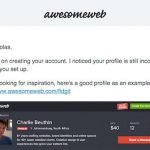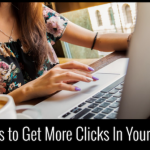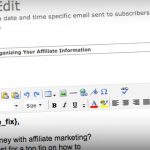
Make Money Online with Email Marketing – Case Study:

So you want to run an autoresponder campaign.
But not just any campaign, one that makes you money…a lot of money.
You’ve heard the stories, right?
Of those guys who send out an email series and within weeks their bank accounts are flooded with cash, they’ve got dozens of new happy customers, all clamoring for more.
If you think it can’t be done, you’re mistaken my friend…
…in fact, I’m going to show you how.
Right here, right now.
But first, the proof:

Now, I didn’t add this proof in as a humblebrag (though I won’t lie, it made me feel pretty good getting that message…).
Nope, I simply wanted to use it to show you the types of results you can get if you understand and implement on the actionable takeaways you’re going to learn below in this case study.
I’m going to show you exactly how I pulled off the success my client was so happy about, plus give you five in-depth takeaways you can use, for real results in your own campaigns.
Have a pen and pad ready for notes?
Let’s do this!
First, let’s look at some of the general details of the campaign.
I’ve changed the basic information to protect the innocent. 🙂
My client, we’ll call him Jamie, was doing a product launch and needed a new autoresponder campaign. He already had an established product that was getting traffic. In fact, his last launch grossed just under $600k, driven primarily through affiliates.
With this launch, Jamie wanted to crush it. He wanted to gross over $1 million!
Yes, it’s a huge amount and a tall task, but if you’ve got your email marketing locked in, seeing results like this are possible, with one caveat…
Which brings us to our first major takeaway:
# 1. Autoresponders are Multipliers
If you don’t have a ton of subscribers or traffic already happening on your site, they won’t make lots of difference. However if you have a lot of subscribers, and if you plug in some basic email marketing strategies you’re going to get tons of results.
So, if you aren’t seeing a lot of traffic on your site right now, work on building that up first. Once you have traffic and subscribers, you’re going to be able to use autoresponders to see some killer results.
Anyway, back to Jamie’s campaign.
Here’s how we did the general setup:
- Affiliates drive traffic to a landing page.
- Once on the landing page, people signed up for a free ebook (you can do a report here as well).
- Once they signed up for the free opt-in they were entered into an autoresponder.
- The autoresponder would drive the sales.
Simple enough, right?
Now, here’s where the magic happens. Which leads us to the next takeaway…
# 2. Use More Than One Campaign
Most people set up one autoresponder series and call it a day. Then they wonder why their sale didn’t bring in as much as they wanted.
The reason? Because you’re leaving money on the table.
Yes, it’s a lot more work to have multiple triggered campaigns going on, but you can both grab more customers and guide them towards more and more upsells.
Here’s how we did it.

Previously, Jamie had a conventional campaign, a standard 10 email series. If the subscriber go to the end and didn’t buy, that was it.
Now we can do better than that, can’t we?
Instead we did this:
Started with a 10 email autoresponder. The first 10 emails we’re a mix of content and pitch for sales, and then a 50% off offer.
Then, we included three separate upsells to the original product, so there were actually four products in total.
If they bought the first product they went into a second custom campaign. They got another four emails that upsold them on the next product.
If they bought the first product, and then the second product, they’d get another series of custom emails that upsold for the third product. This continued on with subsequent upsell campaigns being anywhere from one to three additional emails.
Kinda crazy, right?
For those subscribers that bought every one of the four products, they actually were sent upwards of 20 different emails separated into five different campaigns.
That leads us into takeaway number three…
# 3. Buck Conventional Wisdom
People face conventional wisdom on a daily basis, yes even in autoresponder campaigns. What makes a campaign really stand out is when you can flip that conventional wisdom in simple ways to make a difference.
We did that in a couple of ways in Jamie’s campaign.
The first approach was in the length of the emails. There’s always tons of chatter running around the internet about how long things should be. The “perfect length” to keep potential readers interested, the lack of “attention span” and all that.
Blah, blah, blah.
How’s this for conventional wisdom…
The emails in this campaign averaged between 800 and 1,000 words each. That’s way more than most people send, and way more than some “guru’s” advice.
But guess what?
If you write an awesome email that gets people interested, curious and wanting more, they don’t care what the length is, they just want to read it.
Something else we did in this series to smash through conventional wisdom was to not sell at all the first 5-6 emails.
Sounds sort of insane, since the whole point of the autoresponder was to get a sale (plus a few upsells). But, with Jamie’s campaign the point was to set the stage for what’s to come.
You can pitch straight away but another strategy worth testing, and sometimes works better, in certain scenarios like a product launch is setting the stage. So before you start pitching they need to know and believe a certain amount of things for the pitch to go over right.
That leads us to the next takeaway, learning how to tell a story (that sells):
# 4. Tell Stories, Lots of Stories
Storytelling is a huge part of any successful autoresponder sequence, and with this product launch, it was no different. I’ve found, especially with product launches, if you can frame the entire series as one big story, you’re going to see a lot more success.
There were a lot of open loops very much in the style of Andre Chaperon. And they built a story, so there was a story arc that went through each of the emails from the start to the end.
The main thing we did was walk the readers through the story, the first few emails basically pre-frames the product.
The goal was to expose the readers to the ideas of three specific areas the product talks about, taking them through some history, making it seem like these people who had success in these three areas “knew” something that we didn’t.
If I came out guns blazing saying look you need to buy this product, without any context or background, it wouldn’t be that good. First of all, it’s just kind of hard to believe.
So instead, we do it piece by piece.
First, you get them to buy into the first specific area being amazing. Then you get them to buy into the second specific area being amazing. Then the next email you get them to buy into the third specific area being amazing.
At this stage there hasn’t been any pitch.
The readers are 4-5 emails deep already, and there’s no automatic emotional resistance in their minds about why they are getting these emails because so far there’s been no pitching, it’s just a story.
This story is building interest and curiosity, readers think we’re just talking about these specific areas, learning more about them. There’s no setting off the BS detector at this stage.
And then eventually, then you get into the pitch. A lot of it is talking about more of the same thing, but now it’s talking about these places in the context of the product.
It’s only then the campaign moves into talking about the product over the next emails, but always tieing back in with that overarching story that runs through the entire series.
Once you’ve got your readers hooked on the story, and into the product, you can focus on the upsells, our next takeaway…
# 5. Create Problems (and Solve Them)
One of the biggest keys to success for Jamie’s campaign was getting subscribers to move through the upsells.
Now, most people approach and upsell like this:
“Thanks for buying my product, why don’t you buy this one too…”
Hmm, not quite inspiring is it?
Instead you want to create a product that will then allow you to create complementary products that solve one problem missing from the previous product.
The idea is that every upsell needs to solve a problem created by the product before it. These are the best types of upsells and then you can just use the emails to remind them about it.
Let’s look at a few examples of emails similar to what I used in Jamie’s campaign to see what the upsell emails would look like:
Email 1:
Hey you’ve got this product now, and this product is great because of all these reasons, but there’s one thing that’s missing from this product. Now, if you want that one thing that’s missing, I’ve created another product that’s been designed to tackle this specific loophole that the main product is missing.
In this first email, we’re customizing the pitch and the upsell.
Email 2:
I know you love this product, but I’m curious why haven’t you bought the next product yet? This next product is going to help you solve this very specific problem.
This email is a bit more of a pitch than the previous email. You’re still reminding them of what the new product can do, but preparing the reader for the upsell.
Email 3:
Look, I saw you got the first product, but do you realize you’re really missing out on this next product? Here are all these amazing reasons why this next product is really going to compliment what you’ve already bought and take you to the next level.
This email is more of the hard sell, you’re telling people they are flat out missing out on this next product if they don’t buy.
Email 4:
Alright I noticed you haven’t bought it yet and I know you want it and really need it. So what I’m going to do is I’ve created a 50% off coupon code/discount for you and it’s available for the next 24 hours only so click here and go buy it.
This email is the discount, for those people really on the fence, the big discount can tip them over the edge.
We created a campaign like that for each upsell. They followed the same general idea, but were tweaked to each specific product, and the campaigns became shorter as the upsells continued.
The results?
Well, they speak for themselves.
The client was happy, the customers we’re happy, and I got that nice little note.
Hopefully, this case study is going to leave you with some real actionable take aways you’ll be able to use in your own campaigns.
So you’ve read the case study, you know the incredible potential of email marketing. But only if you do it right. Most people I know need a little help to get started.
That’s why I created a “fill in the blanks” template for the first email in your autoresponder sequence.
This template isn’t just a random template that I threw together…I specifically designed it to help you avoid 5 common mistakes of email marketing:
- Mistake 1 Of 5: NOT Training People To Respond
- Mistake 2 Of 5: NOT Selling From Day 1
- Mistake 3 Of 5: NOT Using A Proven System For Creating Emails
- Mistake 4 Of 5: NOT Setting The Stage Properly For What’s To Come
- Mistake 5 Of 5: NOT Using Conversational Language And Proven Formatting
The end result of using this template is higher engagement, a better relationship with your subscribers, and of course, more sales.
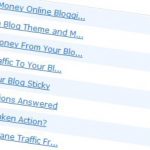

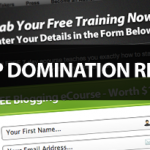
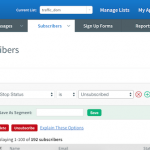
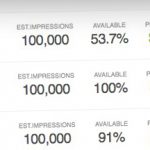
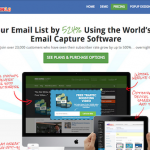
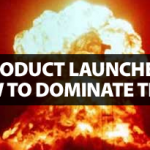

![[GET] WSO 544546 Affiliate Powerhouse 2012 Hands Off, Listbuilding, Pocket Filling Machine](https://seo.maxiaodong.com/wp-content/plugins/wordpress-23-related-posts-plugin/static/thumbs/7.jpg)
